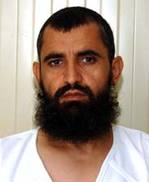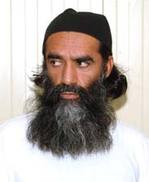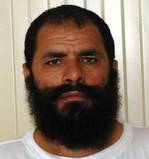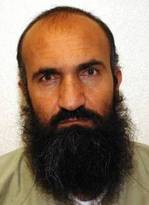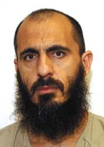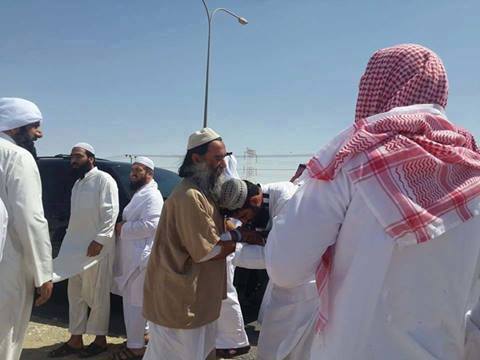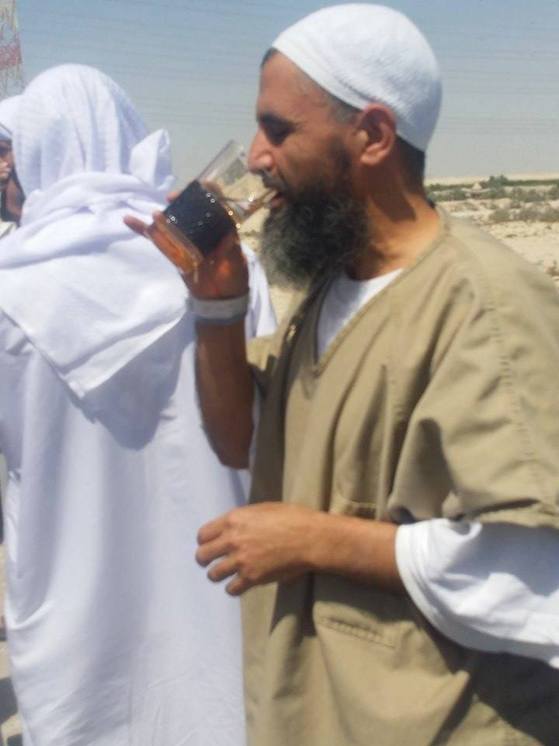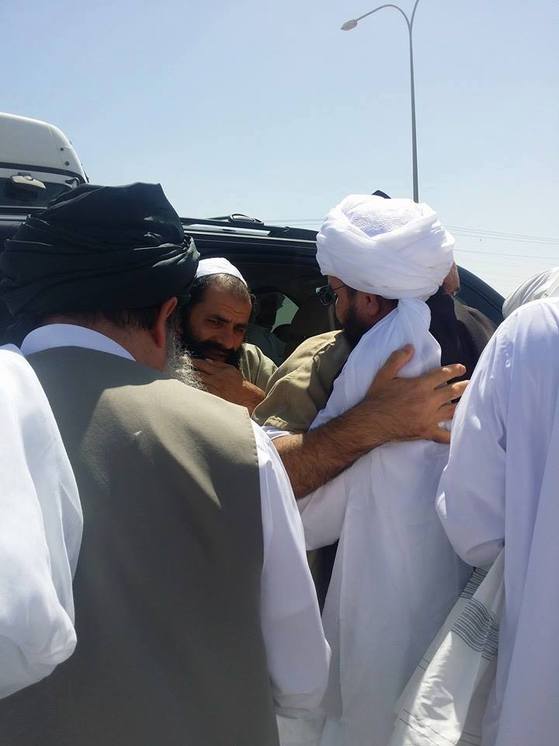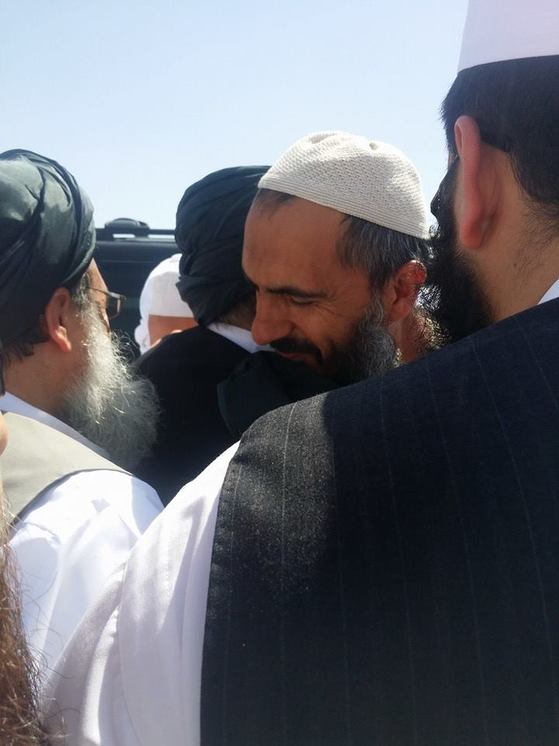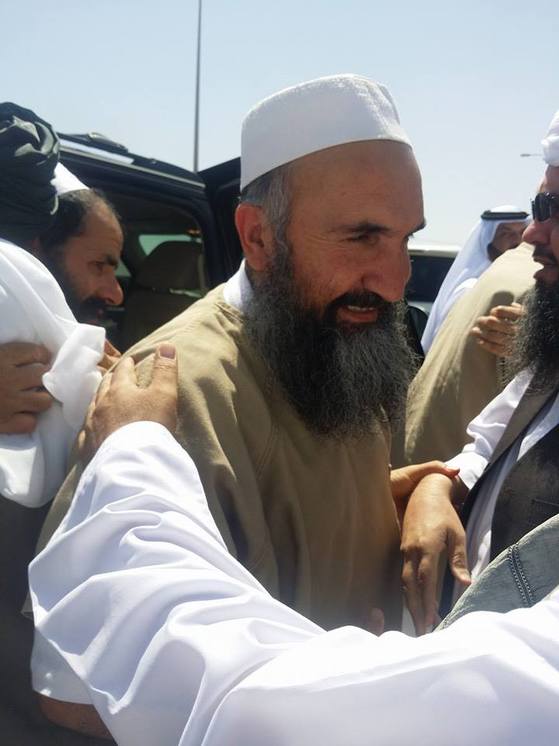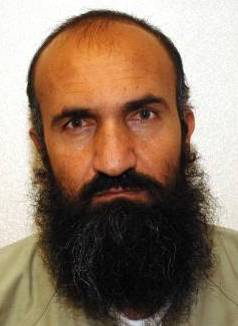As the Obama administration seeks to invest more heavily in training and arming 'vetted, moderate' rebels in Syria's three-year civil war, a conflict that has already claimed over 150,000 lives and drawn the largest-ever concentration of foreign jihadists, the wisdom of this course becomes increasingly questionable. The US' efforts so far have brought neither loyalty to the US, nor victory or even battlefield dominance for the truly moderate rebels, who are outnumbered and outweighed by al Qaeda-linked and other Islamist groups.
Syria has become a de rigeur training ground for jihadists worldwide. Over 2,000 European jihadists alone have gone to Syria to fight, according to a recent European Union estimate. The US' weak attempts to vet, arm, and train purportedly moderate fighting groups have merely fueled an ongoing conflict that shows no signs of abating and is producing a new generation of well-connected foreign fighters who leave the Syrian killing fields to extend the Islamist fight into new battle zones. The result of the continued stalemate between the Assad regime and the rebels is the spawning of a new breed of jihadist cells carrying out a widening array of terrorist activity outside Syria.
Al Qaeda-linked groups, including the official Syrian branch known as the Al Nusrah Front, as well as the Islamic State of Iraq and the Sham (ISIS), are now running training camps in Syria that turn out jihadists capable of mounting attacks against the West. As early as December 2012, Die Welt reported that "Western intelligence operatives say that al Nusrah runs several large training camps in Syria where Islamists with fighting experience - veterans of the wars in Iraq and Afghanistan - train new recruits, including Islamists from Western countries."
In late October 2013, Mike Rogers, chairman of the US House Intelligence Committee, warned that al Qaeda allies in Syria were now "talking about conducting external operations, which is exactly what happened in Afghanistan, which led to 9/11." Days later, a senior US administration official said that ISIS is "really a transnational threat network," that poses "[an] increasing threat to our regional partners, and it's an increasing threat to us."
In March of this year, Al Nusrah announced the establishment of two training camps in Syria. And in April, the ISIS released video showing its "Zarqawi" training camp on the outskirts of Damascus. That same month, the Jaish al Muhajireen wal Ansar (Army of Emigrants and Supporters, or Muhajireen Army), a group of foreign fighters led by commanders from the Caucasus, released video of its training camp in Aleppo province; the video included footage of a bomb-making class. The Muhajireen Army is led by Salahuddin al Shishani, a Chechen, and is closely allied with Al Nusrah; the ISIS; and Ahrar al Sham, an al Qaeda-linked group that is part of the Islamic Front, a large Islamist coalition in Syria. Most recently, an Uzbek jihadist group known as the Imam Bukhari Jamaat has released a video of its training camp in Syria; the group is allied with Al Nusrah and the Jaish al Muhajireen wal Ansar.
The recent videos from ISIS, Al Nusrah, Muhajireen Army, and Uzbek jihadist training camps are reminiscent of others released by al Qaeda from the network of camps in Afghanistan during the 1990s. Al Qaeda used camps such as Khalden and Al Farouq to churn out thousands of foreign fighters who fought alongside the Taliban in the 55th Arab Brigade. Significantly, al Qaeda also selected graduates of the camps to conduct attacks in the West, including the 9/11 operation against the US. [See LWJ report, Al Nusrah Front names training camps after top al Qaeda leaders.]
Democratic governments worldwide as well as Middle Eastern kingdoms are becoming increasingly concerned about the blowback from jihadists who were either extremists before fighting in Syria or became radicalized while there. The elusive movements of returning Syrian jihadists have become moreso now that a number of countries, but by no means all, have begun criminalizing travel to and from Syria for jihad.
Efforts to track these individuals are sketchy at best, and it would appear that in most cases, the whereabouts of a returning Syrian fighter is not generally known until he or she commits a terrorist act. The problem is exacerbated by the jihadist groups' efforts to obscure the identities of fighters; in December, the Wall Street Journal reported that groups such as the Al Nusrah Front and the ISIS confiscate foreign fighters' passports and reuse them for other purposes; in addition, jihadists' deaths may be faked in order to erase their biometric data from Western databases.
The Long War Journal has noted a number of instances since 2011 in which jihadists, usually in cooperation with al Qaeda-linked groups, have left Syria and established new terrorist networks, recruited more fighters, and carried out attacks. The following list, arranged geographically, is a just a sampling. It does not include Syrian-related jihadist activity in Lebanon, Iraq, or Turkey, which is beyond the scope of this article; nor does it attempt to list every nationality in the Syrian foreign fighter ranks, as jihadists from over 70 countries are now fighting in Syria. The list below merely highlights some of the terrorist activity outside Syria that is being carried out by individuals who have participated in the Syrian jihad.
EUROPE
Belgium: On May 30, police arrested Mehdi Nemmouche, 29, a French national and ex-convict who traveled to Syria in January 2013 and is suspected of carrying out the May 24 shooting attack at a Jewish museum in Brussels that killed three people and severely injured a fourth victim. He was detained in Marseille during a random drug stop while traveling by bus from Amsterdam via Brussels. In his possession was a flag of the Islamic State of Iraq and the Sham (ISIS), a Kalashnikov, a handgun, and a camera containing a video in which he claimed the Brussels attack and regretted it had not been more successful. He is thought to have returned from Syria in March, after fighting with the ISIS. He reportedly had an accomplice who helped him escape after the shooting. He was already known to French intelligence at the time of the attack.
In late December, terrorist threats were made against targets in Brussels and Antwerp, including the Atomium monument and Antwerp's Central Station, warning Muslims to avoid revelers on New Year's Eve. The threats were issued on the Facebook account of a Vilvoorde member of the banned Sharia4Belgium organization who is thought to have died in Syria.
In November, politicians and the Belgian royal family received email death threats and bomb warnings that appeared to come from Islamists. Two of the targeted politicians had been involved in efforts to stop jihadists from traveling to Syria.
In October, authorities detained suspected jihadist Jejoen Bontinck, who was arrested at his home in Antwerp after returning from Syria.
In late September, Belgian police in Vilvoorde arrested Ismail Abdelatif Al Lal, a top financier for an al Qaeda-linked network based in Spain that sent Spanish and Moroccan jihadists to Syria. The head of the recruiting network was arrested on Sept. 16 in the Spanish enclave of Ceuta, and eight other members were arrested in Ceuta in June. Lal had made at least three trips to Syria, accompanying suicide bombers. The judge presiding over the arrests noted that although the network was involved in sending jihadists to Syria, "there are increasing references to perform[ing] jihad at home."
In August, authorities in Antwerp and Vilvoorde discontinued welfare benefits for 29 Belgian jihadists in Syria who were were accessing their benefits through banks in Turkey. In April the federal prosecutor's office said it was aware that 33 persons from Antwerp and Vilvoorde had traveled to Syria for jihad; almost all were linked to the Islamist group Sharia4Belgium, whose leader, Fouad Belcakem, was in custody.
France: On June 2, security forces arrested four people in Paris and southern France for links to a jihadist recruiting network that sends fighters to Syria. On May 30, French authorities in Marseille arrested Mehdi Nemmouche, a suspect in the killing of three people at a Jewish museum in Brussels on May 24, who allegedly trained in Syria with terrorist groups. Authorities did not indicate whether the latest arrests are related to the arrest of Nemmouche.
In mid-May, French counterterrorism police arrested six French nationals in Strasbourg who had recently returned from fighting in Syria. Earlier in May, French Interior Minister Bernard Cazeneuve announced the deportation of an Algerian who had been arrested in Turkey and handed over to France on suspicion of facilitating the movement of extremist fighters into Syria. The longtime French resident was linked to jihadist groups in Afghanistan and Syria.
In what is likely a low estimate, Cazeneuve claimed that some 285 French nationals were fighting in the ranks of the Syrian rebels and 120 others were currently in transit between the two countries. The figure had spiked by 75 percent in recent months, he noted, adding that 25 French nationals were known to have died fighting in Syria and about 100 had returned to France. According to a March report in The Daily Beast, in January then Interior Minister Manuel Valls "estimated that 700 French nationals or residents of France were more or less involved in the Syrian conflict, that 250 were currently in Syria, 99 were in transit to get there, 150 had showed interest in going there, 76 had already returned, and that 21 had died on Syrian soil."
On March 26, counterterrorism authorities announced the prevention of an imminent terrorist attack in the Cote d'Azur region and the arrest of a jihadist who had returned from Syria. The suspect, Ibrahim B., had fled in 2012 along with two other members of the terrorist group Cannes-Torcy to Syria, where they allegedly joined the Al Nusrah Front. A raid on his apartment in Mandelieu-La-Napoule near Cannes resulted in the seizure of 900 grams of the explosive TATP, as well as a gun and a computer. A prominent al Qaeda-linked jihadist website had recently reissued a call for attacks in France.
On March 23, Le Nouvel Observateur published an interview with Senegalese-born jihadist filmmaker Omar Diaby, also known as Omar Omsen, who claimed to be the emir of an 80-man French brigade of the Al Nusrah Front. Diaby had traveled to Mauritania, Senegal, and Turkey, as well as twice to Syria.
In December, police were formally investigating about 20 French nationals, many with dual Middle Eastern or North African citizenship, who had returned from fighting in Syria.
Some 800 French nationals are thought to have traveled to Syria to fight.
Norway: On May 27 police arrested a Somali and two Kosovans, all Norwegian citizens residing in Oslo, suspected of supporting the ISIS. The two Kosovans are brothers who reportedly fought in Syria and had a brother who died there. At least 50 Norwegians are thought to have traveled to Syria for jihad, and seven have died there, all fighting for the ISIS. Norwegian Islamists in the Prophet's Ummah group advised members to use encrypted chats when talking about the Syrian jihad.
In early May, Albanian and Norwegian media noted the death in Syria of Egzon Avdyli, an ethnic Kosovan who had grown up in Norway. He is said to have died while fighting in the ISIS ranks. Avdyli, a former spokesman for the Norwegian radical Islamist group Prophet's Ummah, reportedly left Norway for Syria early this year. A Norwegian journalist who had interviewed Avdyli several times said Avdyli had encouraged other young people to travel to Syria for jihad and also "supported the establishment of an Islamic state in Norway or other Western countries." Norwegian intelligence now considers the danger of jihadists returning from Syria to be the most significant terror threat to Norway. [See Threat Matrix report, Norwegian Islamist who fought for ISIS killed in Syria.]
Spain: On May 30, Security forces in Melilla arrested six jihadists involved in a network that sends fighters to al Qaeda camps in Syria, Mali, and Libya. Cell leader Benaissa Laghmouchi Baghdadi, 42, who had spent eight months in Syria, has ties to al Qaeda in the Islamic Maghreb and the Movement for Oneness and Jihad in West Africa (MUJAO) in Mali. Some of the six suspects are also linked to Sharia4Spain, a branch of a global Internet-based jihadist network, which recruits fighters for Syria and Mali.
On April 30, Spanish security forces, working with French police, arrested Abdelmalek Tanem, an Algerian national who also has French citizenship, in Almeria. He had recently returned from Syria, where he worked as a facilitator along the Turkish border, integrating European jihadists into the Al Nusrah Front and the ISIS.
In a joint operation in mid-March, Spanish and Moroccan authorities targeting an al Qaeda recruiting network arrested four suspected members in Spain and three in Morocco. The network, whose activities extend to Morocco, Belgium, France, Tunisia, Turkey, Libya, Mali, Indonesia, and Syria, is headed by Melilla resident Mustafa Maya Amaya, who funneled recruits to the ISIS, the Al Nusrah Front, and al Qaeda in the Islamic Maghreb. Some of the suspects arrested in the operation had returned home after going to conflict zones such as Syria; and in January, a suspected jihadist returning from Syria was arrested in Malaga as a potential "threat to national security," CNN reported.
Sweden: In October 2013, Haytham Rahmeh, the Syrian-born former leader of a Stockholm mosque, was said to have smuggled large quantities of weapons to Syrian rebels for the prior 18 months. Rahmeh, a member of the Syrian National Council and a former member of the Muslim Brotherhood, reportedly purchased the weapons mainly in Libya, and with the help of the Commission for Civilian Protection transported them through Turkey to Syria.
In June 2013, the chief analyst at the Swedish intelligence agency expressed concern about the dangers of Syrian jihadists, noting that at least 30 Swedes were known to have fought in Syria, and "many" had returned. Among those jihadists known to have gone to Syria are some who planned attacks in Sweden and "have been part of this violence-endorsing Islamist, or al Qaeda-inspired, environment for quite some time," he stated. Professor Magnus Ranstorp of Sweden's National Defence College observed that while Germany has a program for ex-jihadists, not a single person in Sweden had defected from jihadism, so far as he knew. [See Threat Matrix report, Swedish intelligence concerned about Syrian jihadists.]
United Kingdom: Two young men were arrested at Heathrow airport on May 31 for suspected involvement in Syria-related terrorism. One was thought to be engaged in funding terrorism in Syria. According to the Daily Mail, the Queen's Speech on June 4 will mention "plans to target the estimated 400 extremists with British links who have travelled to Syria since the conflict began."
On May 20, Mashudur Choudhury, 31, became the first Briton convicted of a Syria-related terrorism crime. The former youth worker at a Portsmouth mosque had traveled to Syria in October with four other men to join the ISIS, and was detained upon his return.
On March 1, former Guantanamo detainee Moazzam Begg, 45, and Gerrie Tahari, a 44-year-old woman, pled not guilty to charges of providing terrorism training and funding terrorism overseas, and were remanded in custody. They were arrested in Birmingham along with two other men. Begg, an activist for an organization advocating for rights of counterterrorism detainees, was arrested on suspicion of having attended a terrorist training camp in Syria and assisting with terrorism there.
In February, British authorities were said to be "closely monitoring" some 250 British jihadists who have fought in Syria and returned home. A British fighter with the ISIS in Syria appeared in a YouTube clip warning aspiring British jihadists of the difficulties of the battle zone.
AFRICA
Libya: An Egyptian Interpol officer recently told Al Shorfa that the agency has been trying for months to help Maghreb countries deal with the reverse migration of jihadists from Syria. Interpol is currently focusing on those who have fought with Al Nusrah, ISIS, and other armed terrorist groups.
In an April Daily Beast article on the takeover of a former US special forces training base outside Tripoli by al Qaeda-linked forces, a US military official said: "Libya in general is a major thoroughfare, the I-95 for foreign fighters into Syria from Africa."
On March 2, the bodies of four alleged Ansar al Sharia members who had fought in Syria were found on a road linking Benghazi's Benina airport to Al-Abya.
In August 2013, Israel National News reported on Ansar al Sharia training camps in Libya that were actively training and exporting fighters for the jihad in Syria. Evidence indicated that the Libyan training camps were in operation as early as April 2012, months before Ansar al Sharia's deadly attack on the US mission in Benghazi, and that they involved coordination with Tunisian facilitators who assisted in preparing the jihadists to fight in Syria.
Hundreds, if not thousands, of Libyan fighters are thought to have traveled to Syria to fight with rebel groups. Many of these Libyans are believed to be fighting with the ISIS or the Al Nusrah Front. Abd al Mahdi al Harati, a deputy of Abdul Hakim Belhaj, the former emir of the Libyan Islamic Fighting Group, led 6,000 fighters in a brigade known as Liwa al Ummah for six months in 2012. The unit was comprised primarily of Syrian fighters, but included a large contingent of Libyans, Sudanese, Palestinians, Egyptians, and Arabs.
Tunisia: In February, Kamel Zarrouk, the deputy emir of Ansar al Sharia Tunisia, was reported to have been killed while fighting alongside the ISIS in Syria. In May 2013, he claimed that "the Al Nusrah Front, Ansar al Shariah, al Qaeda, the Islamic State of Iraq and the mujahedeen in Somalia, Mali, and Algeria, we all stand united against our enemies." He is known to to have recruited youths in Tunisia to wage jihad in Syria.
Tunisians make up one of the largest groups of foreign fighters in Syria. More than 5,000 Tunisians are thought to have traveled to Syria to fight with the rebels. In early February, Tunisian Interior Minister Lotfi Ben Jeddou claimed that the government has prevented more than 8,000 of his countrymen from traveling to Syria to wage jihad.
Tunisians who have fought in Syria have appeared prominently in Ansar al Sharia's propaganda. Ansar al Sharia Tunisia has released numerous images of Tunisian "martyrs" who died while waging jihad in Syria. So many Tunisians have fought in Syria that in March 2013, Ansar al Sharia Tunisia's leader Seifallah ben Hassine (a.k.a. Abu Iyad al Tunisi) discouraged the practice and said the wars in Syrian and Mali have "emptied Tunisia of its young." Similarly, al Qaeda-linked groups in Syria have also featured Tunisians in their propaganda. [See LWJ report, Ansar al Sharia Tunisia deputy leader reportedly in Syria.]
MIDDLE EAST
Egypt: On April 10, Egyptian authorities arrested Wael Ahmed Abdel Fattah on suspicion of planning terrorist attacks in Egypt. State media said he had returned from Syria, where he fought with the Al Nusrah Front. Between November 2013 and April 2014, the al Qaeda-linked terrorist group Ansar Jerusalem (Ansar Bayt al-Maqdis) confirmed that at least four of its fighters who died in Egypt had fought in Syria prior to returning to Egypt. [See Threat Matrix report, Al Nusrah Front fighter reportedly arrested for planning attacks in Egypt.]
In late March, security sources said some of those arrested during a recent raid on an Ansar Jerusalem cell had previously fought in Syria. On March 10, Egyptian authorities arrested Mohammed Durri Ahmad al Taliawi in connection with car bomb attacks in Cairo on Jan. 24 that were claimed by both Ansar Jerusalem and a smaller jihadist group, Ajnad Misr. He had previously been to Libya and Syria, where he "took part in terrorist acts." He also was linked to a case involving Mohammed al Zawahiri, the brother of al Qaeda emir Ayman al Zawahiri. Two other terrorists, Ansar Jerusalem's Walid Badr and Saaed al Shahat, both fought in Syria before returning to Egypt, where they died. [See Threat Matrix report, Egypt says suspect in Cairo attack fought in Syria and Libya.]
Walid Badr, a former army officer, was a suicide bomber in a failed assassination attempt against Egypt's Interior Minister, Mohamed Ibrahim, on Sept. 5. Badr had reportedly been trained by Muhammad Jamal al Kashef, a UN-designated terrorist and longtime subordinate to al Qaeda emir Ayman al Zawahiri. [See LWJ report, Ansar Jerusalem releases video of assassination attempt on Egypt's interior minister.]
Badr's accomplices included "Egyptians and two Palestinians who joined the Free Syrian Army and Al-Nusra Front," Egyptian media reported in February, noting that the arrests were made by Egyptian authorities "targeting Syrian suspects." One source said the "suspects returned from Syria because the jihad in Egypt became a duty particularly after the toppling of ousted President Mohamed Mursi." [See LWJ report, More ties between Ansar Jerusalem and the Syrian jihad reported.]
Shahat had participated in Egypt's Arab Spring uprising in 2011, traveled to Syria to fight with the rebels, and subsequently returned to Egypt to be with his "mujahideen brothers" and partake "with them in their jihad and preparation." He blew himself up to avoid capture by Egyptian security forces in December 2013. [See Threat Matrix report, Egypt identifies Ansar Jerusalem leader as group announces deaths of fighter and preacher.]
Israel: Since the start of the Syrian conflict, the Shin Bet has warned that authorities "fear they [Israeli Arabs] will be exploited by terrorists [in Syria], both as a source of information about targets in Israel, as well as for carrying out military operations against Israel." In July 2013, Hikmat Massarwa, an Israeli Arab from Taybe, was sentenced to 30 months in jail. He had gone to Syria and trained with members of the Syrian opposition. While in Syria, Massarwa had been asked to carry out a suicide attack in Israel, but he declined. As of October 2013, at least 10 Israeli Arabs were thought to have joined the rebels in their fight against the Assad regime. Some of those who fought in Syria and returned to Israel have been arrested by Israeli authorities. [See Threat Matrix report, Israeli Arab reportedly killed fighting regime forces in Syria.]
Jordan: In July 2013, Jordanian Salafist sources claimed that over 500 Jordanian jihadists had gone to Syria and a number of them had joined the Al Nusrah Front.
In late 2012, al Qaeda commissioned a cell of Jordanian citizens who had fought in Syria to plot attacks inside their home country. They reportedly were targeting the US Embassy and were planning a complex assault that involved other targets as well. [See Al Qaeda and the threat in Syria, Thomas Joscelyn's September 2013 testimony to the House Committee on Homeland Security.]
Palestinian Territories: In June 2013, jihadists in Syria called on Hamas fighters as well as members of other Palestinian factions in Gaza to join the Mujahideen Shura Council in the Environs of Jerusalem (MSC), an al Qaeda-linked consolidation of a number of Salafi jihadist groups operating in the Gaza Strip.
And in May 2013, a video featuring Abu Talha al Libi, the sharia official of the Chechen-led Muhajireen Army, was released by the Ibn Tamiyyah Media Center (ITMC). In the video, titled "Fear Allah, O Hamas," al Libi slammed Hamas' campaign against Salafi jihadists in the Gaza Strip. The Muhajireen Army (Emigrants' Army), a unit consisting of foreign jihadists who fight in Syria, is closely allied with the ISIS, and also fights alongside the Al Nusrah Front. [See LWJ report, Salafi jihadist from Gaza reportedly killed fighting for ISIS in Syria.]
Saudi Arabia: In March, Suleiman al Sabi'ee, a Saudi jihadist who had recently returned from Syria, told a Saudi TV interviewer about his experience fighting alongside the ISIS. He had decided to head to Syria after his brother was killed while fighting alongside the Syrian rebels. During his sojourn in Syria, al Sabi'ee, who has a strong social media presence and sizable following on sites such as Twitter and Keek, quickly discovered that ISIS was interested in using his social media accounts as a platform for spreading the group's message. Al Sabi'ee alleged that ISIS members took over his social media accounts and exploited his large following to call others to participate in jihad; he also claimed that ISIS members used his accounts to attack the Saudi royal family and incite violence against the Saudi government. [See Threat Matrix report, Saudi jihadi recounts his time with ISIS.]
Yemen: In early May, a Yemeni official told The Long War Journal that the April 20 airstrikes on an al Qaeda in the Arabian Peninsula training camp in Al Mahfad were intended not only to destroy AQAP's base and sites in Al Mahfad and deter their recruiting and training capability, but also to kill Saudi fighters who had returned from Syria. He said that "dozens [of Saudis have] infiltrated the border and joined AQAP." More than 30 AQAP fighters were killed in the drone strike and accompanying Yemeni airstrikes. [See LWJ report, AQAP notes death of local leader in drone strike.]
ASIA
Kyrgyzstan: In early February, authorities announced the arrest of six suspected terrorists in Osh; some had allegedly trained in international terrorist group camps in Syria and fought there before returning to Kyrgyzstan. The suspects were said to be planning attacks in Osh and Bishkek. Kyrgyz fighters are known to have traveled to Syria and some have joined the Al Nusrah Front.
In September 2013, a Kazakh national and two Kyrgyz citizens who recently returned from fighting in Syria were arrested in the southern region of Osh on terrorism charges. Authorities said the three men had been dispatched from Syria by the Union of Islamic Jihad (IJU) to conduct terrorist activity in Kyrgyzstan.
Pakistan: In July 2013, Reuters reported that the Pakistani Taliban had sent "hundreds of men" to Syria to fight alongside their "Mujahedeen friends," at the request of "Arab friends." A Pakistani Taliban commander said: "We have established our own camps in Syria. Some of our people go and then return after spending some time fighting there." Members of al Qaeda and other and various Central Asian groups were also said to be traveling from Pakistan to Syria to fight. [See Threat Matrix report, Hundreds of Pakistani jihadists reported in Syria.]
Incidentally, back in 2009, LWJ reported that more than 20 Britons who had trained in al Qaeda terror camps inside Pakistan had returned to Britain, and that Pakistan's intelligence agency, which had been monitoring them, did not inform British authorities until after the men had entered the UK. British authorities were said to be "nearly overwhelmed" at the time in tracking these returning jihadists. Al Qaeda was already known to be running several camps for Westernized members. In October 2007, the presence of one such facility, in Mir Ali in North Waziristan, had been noted. "According to the intelligence reports, this al-Qaeda camp is planning attacks in Europe, notably the United Kingdom, Germany and France," the Asia Times reported. [See LWJ report, Al Qaeda-trained Britons return from Pakistan.] The author of that Asia Times report, Syed Saleem Shahzad, was tortured and killed in May 2011, allegedly by Pakistan's intelligence agency.
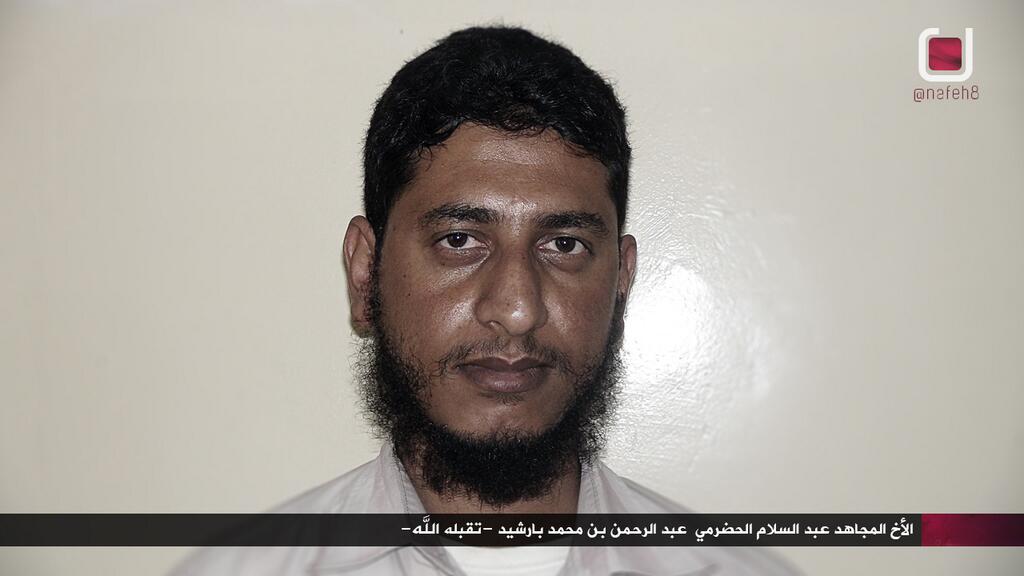 [Photo source: Twitter]
[Photo source: Twitter] 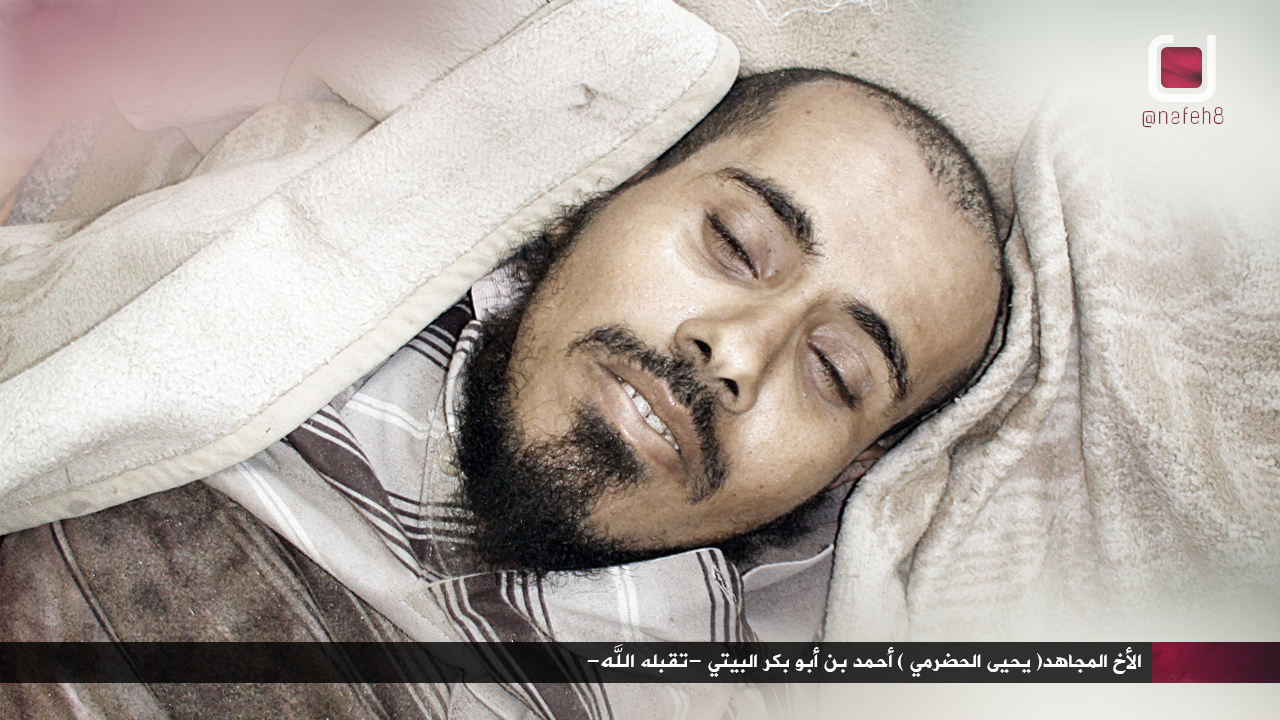 [Photo source: Twitter]
[Photo source: Twitter]

